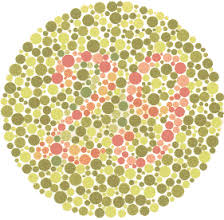One science question I have always wondered is do all human beings see colors in the same exact way. This question is mind boggling to me, because there is no real way to figure out the truth about it. What if what I think is blue, somebody else thinks is red. All people who can see in color can agree that the ocean, blueberries, and the Argentinian flag are all “blue”, but what they see as blue could be a different color for me. We both call it the same color, but may not see it the same way. I am really intrigued by this question, and really want to figure out if humans see all colors the same.
For the longest time, scientists thought that humans typically see colors the same way, as there is a default way that humans process light, but this theory has been challenged and now scientists think otherwise. One specific scientist at the University of California Santa Barbara said not only is it possible that humans can perceive colors differently, but it is very likely, if not definite. The science behind this is the idea that for every person, they see the color photoreceptors at a different point in the wavelength. My blue photoreceptors may be more sensitive to wavelengths at a different point than somebody else. Even if I am sensitive to the wavelength 5 nanometers from somebody else, this could be the difference between the colors blue and green.
Prime evidence that proves that people perceive colors differently is color blindness. Some people are not able to distinguish between two colors. For example, somebody unable to tell the difference between red and orange either think of both colors as red or orange. Say they see both red and orange as red, that would mean them and I see the color orange differently. The see it is what I think is red, and I see it as what I think is orange. While some people can see less colors than the average human, others can actually see more. When staring at a rainbow, there are people who can see colors beyond the red section of the rainbow, which is called the ultra red. This color is not visible to the majority of people. As said earlier, people view colors through their photoreceptors. The average human has three photoreceptors, but it is possible for someone to have four. This fourth photoreceptor allows the individual to see a lot more and specific colors.
For the longest time, scientists believed that all human beings saw the shortest wavelengths as blue and the longest as red, but they aren’t so certain that this is the case anymore. Scientists even believe that thoughts, mood, feelings, and memories can play a role in the way we see colors. They say that two people could stare at the exact same wavelength, but see different colors based off of the way they were feelings.
To conclude: yes, it is very possible and very likely that humans see colors differently than other people. At the same time, I do not believe it is the way some people think of it. I do not think someone can see what I see as red as the color blue. That seems to extreme, and some scientists agree with that. I do believe, though, that humans see different shades of colors differently from others. So what I see as a regular blue, another person may see as a little bit lighter or little bit darker blue. So yes, I, along with almost every scientist, believe that everybody sees colors in their own unique way.



Wow I really enjoyed reading your blog. I actually was just discussing this with my uncle over Thanksgiving break. We were discussing how we perceived colors since he is color blind. It is honestly so crazy how some people see different colors than others. I think the color blindness test you provided is so interesting. When my uncle told me he could not see the number in the picture, I was so shocked because it was so clear to me. He told me that men are more likely to be color blind than women are. Here is explaining why!